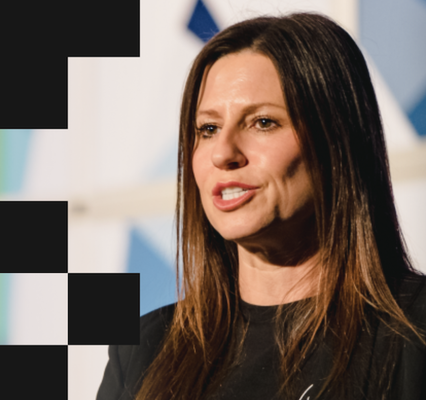
Diversity, equity, and inclusion (DEI) work is a journey. We’re all at various points along the continuum and the work is never finished. In addition, DEI is heavily nuanced and rapidly evolving. What’s more, we all bring our unique lived experiences and points of view to every DEI discussion.
What this means is the DEI journey is complex and it’s impossible to get it right every time, for every situation. But it doesn’t mean you shouldn’t try to learn as much as you can about DEI best practices and get comfortable with making mistakes.
Making a commitment to evolving your DEI communications strategy can feel daunting and at times, even overwhelming, but the good news is it’s absolutely doable and it’s vital for your business that you do.
Every DEI journey starts with having compassion for yourself and others. and then taking the first step—examining your language.
Words Have Impact
We make choices every time we speak and with every word we write. Our words are intentional. So by intentionally choosing to use inclusive language, we recognize that words have power. Words allow us to connect, inspire, and nurture as well as shame, hurt, and frustrate. By being deliberate, inclusive, and intentional in the language we use, we can reach a wider audience and create meaningful and lasting change.
When you think about DEI, you might picture traditionally underserved or underrepresented populations—usually driven by things like race or gender identity. However, true inclusion is much broader than this. To create content or use words that are diverse, equitable, and inclusive—you must consider different sizes, ages, social statuses, abilities, and more.
Inclusive language means:
Doing this provides a more accurate view of the world by reflecting its diversity rather than perpetuating stereotypes.
In contrast, when we communicate without respect, our words can make people feel undervalued, out of place, or invisible. Language that excludes, diminishes accountability by downplaying intent. It also leads to othering, the notion that an entire population is not part of “us.” Language that excludes makes false and damaging assumptions about people based on their age, culture, physical ability, gender, or gender identity, sexual orientation, and size.
Inclusive language best practices apply equally to your internal communications, such as your word choice in meetings and emails, as they do your external communications, such as content posted to your website and social media channels.
Inclusive language best practices should include:
Context is Crucial
You always want to be aware of the context in which language is being used. For example, some terms are used by people as a means of claiming their identity, but can be seen as derogatory, when used by others.
Power dynamics, relationships. setting, race, gender—all of these can change the meaning and the impact of words. For example, my best friend says, “Hey, girl, you looked gorgeous last night,” vs. a male colleague who says, “Wow, there are some many gorgeous girls at this conference.”
The same words—but they hold a completely different meaning based on the context. Meaning, intent, the situation, and the people involved can make all of this feel very difficult to get right.
So how do we get it right?
Engage in Empathy
In addition to the complexities of context, language used to connect with and describe different audiences and identities is in constant flux. When referring to historically underrepresented communities and cultures, there may be no single right word to use but we can be mindful of our choices.
By developing empathy for the person consuming your words, you move away from a position of defensiveness (“That’s not what I meant.”) to a place of openness and curiosity. This is the point at which you accept that you will make mistakes. You can say, “I didn’t realize what my word choice meant to you. I apologize.” Or, “Thank you for bringing this to my attention. I’m so grateful that you felt comfortable sharing that with me. I apologize.”
Remember that your point of view and your intent, doesn’t negate or override the impact of what you have said or written. If you make a misstep or commit a microaggression, remember this is not about you. People have a tendency in these situations to over apologize because they’re uncomfortable or embarrassed. It’s not the responsibility of the person you’ve offended to assuage your guilt, repair your ego, or educate you on the cultural implications and better word choices for the future. On your own time, do your homework. We all have room for growth and much to learn.
Every day, we have the opportunity to create a culture of belonging through our word choices. Championing an inclusive culture in which everyone is represented and every voice is heard is an important first step on your DEI journey and one that you can (and should) start today.
— with contributions from Dana Guterman, Content Strategist
 Sierra Alvis Robinson
Sierra Alvis Robinson
DIRECTOR, COMMUNICATIONS & CONTENT
The original version of this page was published at: https://www.phase2technology.com/blog/the-importance-of-inclusive-language
From engineering interconnected patient experiences to designing new digital platforms, our experience with hospitals and healthcare systems is extensive and touches on every facet of the business.
One of the most important things we do for our clients is to help shift the organization’s mindset from focusing on the project (the process) to thinking in terms of creating ...read more
OR, SAYING "YES, AND" TO THE CORONAVIRUSNB: This is a long post, so think of it as a resource to revisit rather than something to ingest in one sitting. I mean, who has the ...read more
UI Design Podcast: Episode 1Whether you’re a UI Designer, a Developer or simply someone that has an appreciation for quality digital experiences, this podcast should be valuable ...read more
When it comes to digital accessibility, do you have new terms to learn, a never ending to-do list, and deadlines that make the process intimidating? There is a lot of fear and uncertainty ...read more